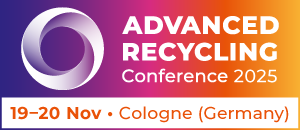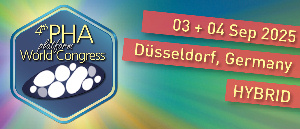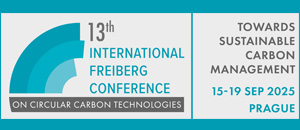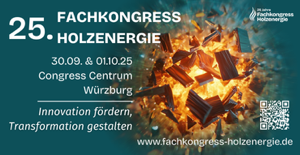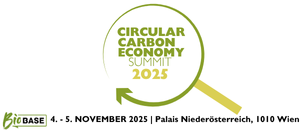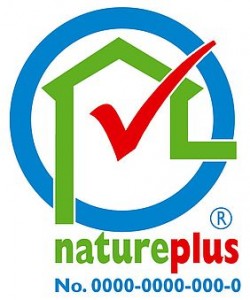 At its meeting on 17th September, the natureplus Criteria Commission (CC) decided on a number of changes to award requirements und took some general decisions on gypsum-based products and radioactivity tests.
At its meeting on 17th September, the natureplus Criteria Commission (CC) decided on a number of changes to award requirements und took some general decisions on gypsum-based products and radioactivity tests.
GL 5020 Climate compatibility and energy efficiency
This Guideline 5020 was finally adopted and published in August 2020 after several hearings and board meetings and a process of about two years. The CC has now decided to develop a procedure for the natureplus-compatible publication of the Carbon Footprint. This procedure should be available by the end of the year at the latest.
Amendment GL 2001 Construction elements
It was decided to abandon the requirement that the insulation material used in a building element must always be natureplus-certified. Furthermore, the requirement remains that at least two components in a more complex building element must be natureplus-certified. In the case of simpler elements with only up to five components, it is sufficient for a natureplus-certification of the element if only one of the components has previously been natureplus-certified. The amendment has already been published.
Guideline 0807 mortar
GL 0807 had been slightly amended to allow the certification of resource-saving roller-compound mortar. The amendment has already been published.
Amendment of GL 5010 Low Emission Building Products
Guideline 5010 was published last year. It sets out the requirements for emission tests for all types of construction products. Here the exemption for saturated aliphatic hydrocarbons from printing inks in cellulose products has not been considered, which was already included in the old GL 0107. In line with the previous rule, CC now decided to exclude the sum of saturated aliphatic hydrocarbons C17-C22 from the sum of SVOCs (semi-volatile organic compounds) and to combine them with the sum of VOCs (volatile organic compounds) to a new standard with a limit value of 1,000 µg/m² exclusively for products made of recovered paper. Individually they were also assessed by their LCI-value and in the R-value – as natureplus does for all VOCs. The reason for this special regulation is that the residues from the old printing inks in the newsprint used cannot be completely avoided by the manufacturers despite all input controls and that these do not pose any risk in the actual application and with these still strict limit values. The use of recycled paper e.g. for the production of insulation materials will continue to be supported. The change still has to be implemented in GL 5010.
Publication of test methods
The test methods for testing the natureplus requirements e.g. for heavy metals, pesticides, AOX/EOX, PAK etc. are soon to be published in a separate Guideline 5011 in order to demonstrate greater transparency in this respect too. The question was raised as to whether we should in future also test the VOC (solvent) content of paints, which is not included in our requirements, but does play a role in some other quality marks. The CC has decided that this should be offered on a voluntary basis in the future.
In this context, the PFAS were addressed, which, as water-repellent coatings, represent a ubiquitous environmental hazard. Following a decision of the CC, the PFAS will in future be included in the list of banned substances in GL 5001 Chemicals. Furthermore, it was discussed whether the odour test should continue to be carried out according to the VDA 270 method or according to EN 160000-28. It was decided to include the odour test according to a modified method in GL 5010. In addition, the Commission is now examining whether the share of renewable raw materials (biosourced products) should in future be reported according to the mass balance method following EN 16785-2 standard, which is subject of subsidies, particularly in France and Belgium. This method could be introduced without much effort for natureplus, as it is based on the LCA, which is used anyway.
Assessment of radioactive emissions
In almost all natureplus-Guidelines for mineral building products a check of artificial and natural radioactivity is required. However, in the past, these tests have always remained without conspicuities. The national application documents for CPR BWR 3 in European countries now regulate radioactive emissions. These documents can be referred to during the natureplus-testing. Radon emissions, which are occasionally discussed for clay products, are extremely difficult to measure and are also well below a hazardous limit. Artificial radioactivity, which in the past was associated with certain glazes of tiles, is now banned and has disappeared from the market. As a result, the CC decides to carry out a radioactivity test only in exceptional cases (e.g. granite plates).
Gypsum-based products
On the basis of a certification request, it was discussed whether the CC should prepare the outstanding guideline for gypsum-based plasters. The problem here is the origin of the raw material. The extraction of natural gypsum is very controversial in many regions because of the nature conservation problems. For natureplus, natural gypsum is therefore only acceptable in small proportions and if extraction is unproblematic. The most important source of recycled gypsum from the flue gas desulphurisation of coal-fired power stations to date threatens to dry up with the coal phase-out, which will cause increased demand for natural gypsum. For natureplus, products made from recycled gypsum from construction site waste would be of interest as an entry into a circular economy. However, these products are hardly on the market yet. Gypsum plasters are also a disturbing material in the processing of construction waste. In Berlin, gypsum plasters are therefore no longer permitted in some areas of subsidised new buildings. For these reasons, the CC decides not to issue Guideline 0802 for gypsum plasters and to exclude gypsum as a raw material in GL 0808 Mineral Fillers. However, the guidelines for gypsum plasterboards (GL 1001 and 1002), which are currently in revision mode, will be further processed, as better recycling possibilities are offered here.
Source
natureplus, press release, 2020-09-21.
Supplier
natureplus e.V. Internationaler Verein für zukunftsfähiges Bauen und Wohnen
Share
Renewable Carbon News – Daily Newsletter
Subscribe to our daily email newsletter – the world's leading newsletter on renewable materials and chemicals






